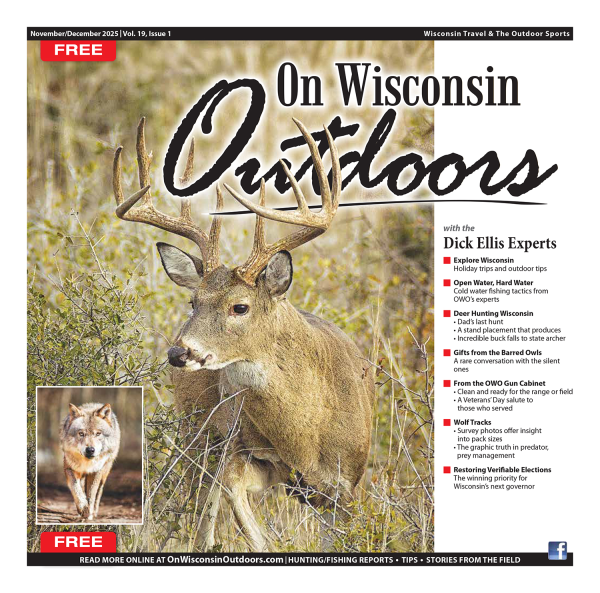Deadly disease of bats found in NW Iowa; Wisconsin bat populations at risk
MADISON – White Nose Syndrome, the fungus that causes a deadly bat disease, has been confirmed in an Iowa cave popular among cavers.
The Iowa Department of Natural Resources confirmed today that recent surveillance efforts for the bat disease White Nose Syndrome (WNS) detected the fungus on a bat at Maquoketa Caves State Park in northwest Iowa, just 30 miles from Wisconsin and within easy flying distance of bats dispersing from this cave.
Wisconsin bat officials urge people to take steps required to avoid spreading the fungus when visiting caves or other underground sites in and around Wisconsin.
“Wisconsin cavers and cave owners have worked hard with us to take actions to protect bat populations,” says Jennifer Schehr-Redell, a Wisconsin Department of Natural Resources cave and mine specialist. “Now we need everyone to follow the rules for decontaminating and moving gear to save our cave bats that are so important to our ecosystems and to keeping crop and forest pests and mosquitos in check.”
DNR has special decontamination steps required for cavers traveling with their gear between sites in Wisconsin. Both recreational cavers and tourists at caves and mines are not allowed to bring any gear or clothing into Wisconsin after it has been used in a cave outside of the state. For more information about WNS, related rules, or ways to help bats please go to dnr.wi.gov and search for bats.
Iowa’s discovery is a serious concern because it means the fungus is close to the area of Wisconsin with the state’s highest concentration of bat hibernacula.
Hibernacula is the term used by biologists for sites occupied by wintering bats. Bats, which are widely dispersed during summer months, gather at these sites in large numbers to wait out the cold weather. WNS can spread quickly through these concentrated groups of bats. Surviving bats can further spread the fungus when they emerge from the hibernacula in the spring.
Hibernacula is the term used by biologists for sites occupied by wintering bats. Bats, which are widely dispersed during summer months, gather at these sites in large numbers to wait out the cold weather. WNS can spread quickly through these concentrated groups of bats. Surviving bats can further spread the fungus when they emerge from the hibernacula in the spring.
The fungus is very hardy according to Schehr-Redell and can persist in caves even without bats present meaning otherwise healthy bats can be infected by the fungus months after bats have left the cave.
“We need people who visit caves in Iowa and Wisconsin and surrounding areas to take steps to avoid accidentally spreading the fungus on their clothing or footwear to our caves,” says Schehr-Redell.
“Regular washing does not kill the fungus or fungal spores. Wearing separate clothing for each cave visited is the best precaution. Cameras, flashlights, and other hard-sided items need to be wiped down using Lysol brand disinfecting wipes between visits to underground locations.”
Wisconsin’s tourist caves and mines also have measures in place to protect their sites, including asking visitors not to wear clothes and shoes or bring any items that have been in caves or mines outside of Wisconsin on their tours.
State park and trail visitors will also need to follow protocol at the caves and tunnels they visit on the properties.
Rules in Wisconsin prohibit human transport of the WNS fungus which is listed as a prohibited invasive species under the state’s invasive species law. The rules apply to all caves and mines in Wisconsin including caves and tunnels in Wisconsin State Parks.
Wisconsin has four bat cave species that are vulnerable to white nose syndrome. It kills 70 to 100 percent of bats in contaminated caves. The disease was discovered in New York in 2006, has already spread to 19 states and four Canadian provinces, and has killed an estimated 6.7 million bats already.











